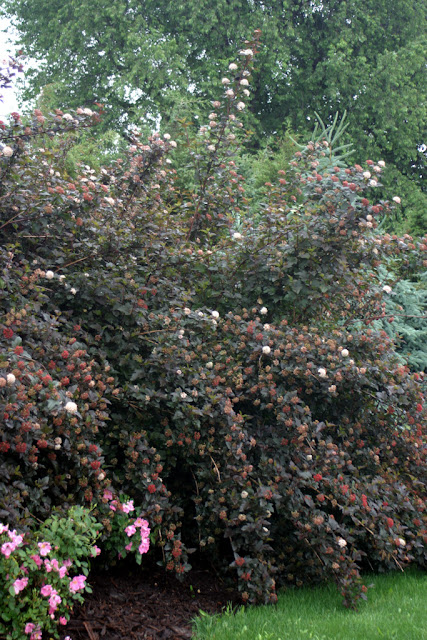Bark can be one of the most beautiful aspects of a tree. When you walk through the woods or through a garden, it is usually what you see at eye level. Every tree species has its own unique bark, offering different colors, patterns, and textures, some quite mundane and inconspicuous to the untrained eye, while others are a piece of precious art, giving the viewer an easy means to recognize the species.
In my travels, I get to see a lot of plants, but it is a special joy to visit a garden with a diversity of mature trees—even better if they are labeled. I always stop to photograph them, particularly their leaves and bark, but it is the bark diversity that fascinates me the most. Andrew Bunting, an old friend with whom I interned at the Chicago Botanic Garden, got me in the habit of noticing and photographing tree bark. He had written an article on bark in some magazine and had accompanied it with a series of beautiful pictures. "How beautiful," I thought, and shortly thereafter I started shooting bark. I don't see Andrew all that often anymore (he is now working at the Atlanta Botanical Garden, and I'm in Michigan or off traveling the world), but each time I take a photograph of bark, I think of him.
As children we are taught in school to learn the trees by their leaves. Who hasn't made a leaf collection as an elementary school project? But leaves are often hard to view on large mature trees until they fall. The leaves of a species or cultivar can also be quite deceiving. Think of all the plant names that end with the Latin word for leaf, -folium, such as Acer carpinifolium and Viburnum acerfolium. There must be a hundred different leaf shapes in Acer palmatum. Bark gives us one more clue when identifying a tree or shrub, so get to know your bark. You'll find it quite useful when walking in the woods in the winter months.
Below are 25 diverse images of tree bark, and they're not is any particular order. Some are easy to recognize, while others are a bit more challenging. See if you can identify them on your own. Then try matching them up with a list of names provided. How'd you do? Share this post with your friends and cohorts to test their tree and bark knowledge. It's kind of enjoyable, at least for me, but then again, I'm a bit of a plant nerd. Enjoy.
Scroll down below the pictures to see the plant list and even further to see the answers.
 |
| One |
 |
| Two |
 |
| Three |
 |
| Four |
 |
| Five |
 |
| Six |
 |
| Seven |
 |
| Eight |
 |
| Nine |
 |
| Ten |
 |
| Eleven |
 |
| Twelve |
 |
| Thirteen |
 |
| Fourteen |
 |
| Fifteen |
 |
| Sixteen |
 |
| Seventeen |
 |
| Eighteen |
 |
| Nineteen |
 |
| Twenty |
 |
| Twenty-One |
 |
| Twenty-two |
 |
| Twenty-three |
 |
| Twenty-four |
 |
| Twenty-Five |
TREE LIST
Acer griseum - paperbark maple
Ailanthus altissima - tree of heaven
Alnus incana - European gray alder
Arbutus menziesii - Pacific madrone or madrona
Betula alleghaniensis - yellow birch
Betula papyrifera - paper or canoe birch
Carpinus betulus - European hornbeam
Carya illinoinensis - hardy pecan
Castanea dentata - American chestnut
Cornus florida - Eastern Dogwood
Davidia involucrata - dove tree
Diospyros virginiana - American persimmon
Fagus grandifolia - American beech
Gymnocladus dioicus - Kentucky coffee tree
Lagerstroemia x 'Natchez' - Natchez crapemyrtle
Pinus bungeana - lacebark pine
Prunus serrula - Himalayan birch bark cherry
Robinia pseudoacacia - black locust
Sequoiadendron giganteum - Giant Sequoia
Stachyurus praecox - Stachyurus shrub
Stewartia pseudocamellia - Japanese stewartia
Syringa vulgaris - common lilac
Taxodium distichum - bald cypress
Tilia americana - basswood or American linden
Zelkova serrata - Japanese zelkova
Scroll down ever further, if you wish to view the answers with clues for remembering them.
1. Betula papyrifera - paper or canoe birch - WHITE PAPER
2. Ailanthus altissima - tree of heaven - STRETCHED SKIN
3. Taxodium distichum - bald cypress - FLUTED
4. Tilia americana - basswood or American linden EVEN BASKET WEAVE
5. Lagerstroemia x 'Natchez' - Natchez crapemyrtle ARTISTIC BEAUTY
6. Betula alleghaniensis - yellow birch - SILVER PAPER
7. Alnus incana - European gray alder - FORGETTABLE GREY
8. Arbutus menziesii - Pacific madrone or madrona BEAUTIFUL CREAM AND RED
9. Syringa vulgaris - common lilac ANGULAR NARROW RIDGES
10. Robinia pseudoacacia - black locust COURSE BASKET WEAVE
11 Stewartia pseudocamellia - Japanese stewartia ARTISTIC BEAUTY
12. Pinus bungeana - lacebark pine - PATCHY
13. Castanea dentata - American chestnut SMOOTH IRREGULAR PATCHES
14. Carya illinoinensis - hardy pecan TIGHT BASKET WEAVE
15 Zelkova serrata - Japanese zelkova CHUNKY PATCHES
16. Carpinus betulus - European hornbeam SMOOTH
17. Cornus florida - Eastern Dogwood - ALLIGATOR BARK
18 Acer griseum - paperbark maple - RED PAPER
19 Davidia involucrata - dove tree IRREGULAR FLAKES
20 Diospyros virginiana - American persimmon - THE HULK
21. Sequoiadendron gigantieum - Giant Sequoia - SOFT RED PILLOW
22 Stachyurus praecox - stachyrus shrub LINEAR SMOOTH AND ROUGH
23 Gymnocladus dioicus - Kentucky coffee tree - LONG FIXED FLAKES
24. Fagus grandifolia - American beech - SILVER, OFTEN CARVED
25 Prunus serrula - Himalayan birch bark cherry - RED GLOSSY






































